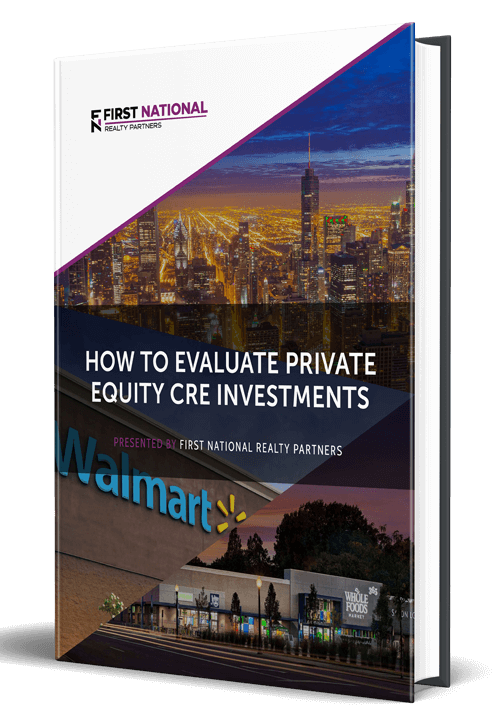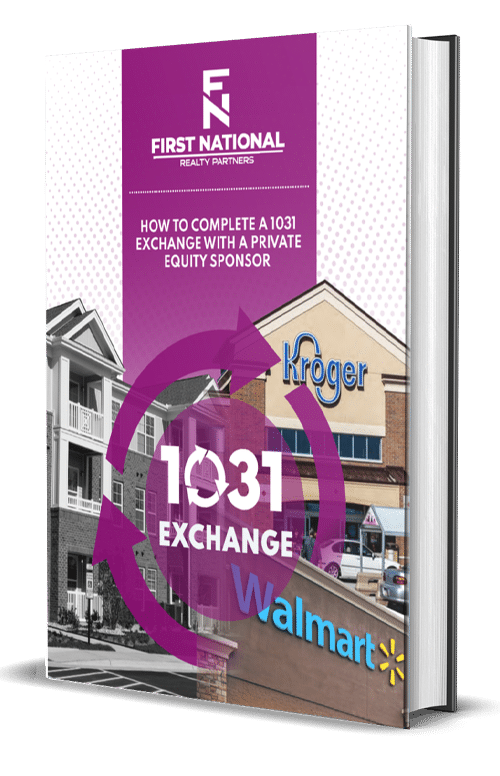On the homepage of our website, we have a statement that reads “we look at 1,000 deals and choose ONE.” To get from 1,000 deals to one, we devote a significant amount of resources to our underwriting program and have developed an efficient process designed to uncover the deals that have the best chance of being successful.
An easy way to think about our underwriting process is as a funnel. A large number of deals go into the top and they are subjected to various filters and screens. By the time they reach the bottom of the funnel, only two or three are left that meet all of our criteria.
Generally, our underwriting process has four phases:
- Incoming Deal Flow;
- Initial Screen;
- Preliminary Underwrite; and
- Final Due Diligence.
In this article, we’ll explain each of the phases of the CRE underwriting process.
Incoming Deal Flow
Continuing the analogy, the top of the underwriting funnel is what we call “deal flow” and we believe that it is one of the most important contributors to our investment success.
We have spent years building relationships with an extensive network of brokers, tenants, owners, and anyone else who touches the commercial real estate assets that we are interested in purchasing. We leverage these relationships to generate a significant amount of deal traffic coming through our door. We pour all of these deals into the top of the funnel as the first step in determining which of them meet our investment criteria.
The Initial Screen
Once a deal is in the “funnel,” the first filter is to perform an initial screen. Through hundreds of deal repetitions, we have developed a highly refined set of criteria designed to quickly filter out the deals that we don’t have any interest in. The criteria include:
- Location: Is the property in a geographic area that we believe in?
- Demographics: Is the local population in their prime spending or household formation years? We like to see a large skew in the 25 – 40 age cohort.
- Household Income: Do income levels support the retail use that we are looking for?
- Population Growth: Does the market have a net positive rate of population growth? Is it a high growth area?
- Credit Analysis: Who are the tenants in the property and what do their financial statements look like? Are they a national tenant with a strong balance sheet that can guarantee the lease payments? Or, are they a small local retailer?
- Property Fundamentals: What is the condition of the property? Are deferred maintenance and/or capital improvements needed?
- Sales Price: What is the cap rate? Is it based on existing Net Operating Income? How does it relate to comparable sales?
We weigh and apply these criteria for each deal that enters the funnel and a high number of opportunities don’t make it through the initial screen, and it is designed that way. We only want to take a deeper dive on the deals that have the greatest chance for success.
Preliminary Underwriting
For the deals that pass the initial screen, we take a deep dive into every aspect of the property, which involves reviewing information provided by the broker, outside research, and proprietary due diligence. Highlights of preliminary underwriting include:
- Review the Offering Memorandum: The Offering Memorandum is a marketing document produced by the listing broker and it is designed to portray the property in the best possible light. But, it occasionally leaves out key details. We review the Offering Memorandum thoroughly to learn as much as we can about the property.
- Create List of Questions: Through our review of the Offering Memorandum, we compile a comprehensive list of questions for the broker and/or seller. For example we may ask about the age of the roof or the expenses associated with operating an elevator. Through this list of questions, we attempt to verify every fact in the Offering Memorandum and clarify a few that aren’t.
- Vacancy Analysis: If the property has existing vacancies, we want to know why. We also dig into the property’s historical reports to develop a vacancy trend that will inform our financial projections.
- Lease Analysis: We seek to understand the key provisions of the lease for each tenant in the property. We look for things like termination rights, co-tenancy issues, and covenants to uncover any red flags.
- Preliminary Model: We develop our own financial models for each property because we really want to understand the assumptions that drive returns. To create the models, we do a thorough analysis of the property’s historical financial statements to get a feel for the potential downside risks.
- Operating Efficiency: For each property, the ultimate goal is to get the tenant(s) to cover 100% of the operating expenses. This isn’t always the case so we look at the “operating efficiency” of an asset – meaning what are the expenses to run it and what percentage is covered by the tenants?
- Investment Committee / Approval: Our preliminary underwriting analysis is compiled into a document and submitted to our investment committee, which is a group of senior leaders who make the ultimate “yes/no” decision. The committee meets regularly and values a robust debate about the relative merits of a transaction.
If the transaction is approved by the investment committee, it moves into the Final Due Diligence phase.
Final Due Diligence / Site Visit
Prior to making an offer on the property, there are a few final details that we want to make sure we fully understand. To get a handle on them, we perform a site visit to get a feel for the true property conditions and to uncover any items that the preliminary underwrite may have missed. As part of the site visit, we will:
- Speak with the Current Tenants: We aren’t just going in the stores. We are touching the merchandise, asking questions, and speaking to store employees to actively solicit feedback on the true nature of the conditions on the ground.
- Sub-market Tour: We will drive the submarket to look for things like the condition of the roads, proximity to highways, ingress/egress to the property, and other attractions that could drive traffic to our property. We’ll also visit competing centers to assess their condition and tenant mix.
- Third-Party Consultants: On occasion, tenants won’t report their sales so we occasionally hire third-party consultants with very specific expertise to validate our assumptions about a given tenant’s performance. They help us drill down into the performance of our acquisition target as well as comparable stores in the surrounding area.
We use all of this data to create a business plan for the property that will guide it on a go-forward basis. Once complete, we go back to the investment committee for final approval. If we get it, we place an offer on the property. It is important to note that not all of our offers are accepted. We may place them for three or four properties, but only one is accepted.
Summary & Conclusion
If it seems like the underwriting process is excessive it is. It’s designed to be that way to protect our investor’s capital on the downside and to maximize return potential on the upside. The process is designed to be critical and to eliminate deals that pose an unacceptable level of risk or don’t meet our investment criteria.
We believe that significant deal flow and sound underwriting principles are the keys to our success and strict adherence to this process plays a major part.
Interested In Learning More?
First National Realty Partners is one of the country’s leading private equity commercial real estate investment firms. With an intentional focus on finding world-class, multi-tenanted assets well below intrinsic value, we seek to create superior long-term, risk-adjusted returns for our investors while creating strong economic assets for the communities we invest in.
Whether you’re just getting started or searching for ways to diversify your portfolio, we’re here to help. If you’d like to learn more about our investment opportunities, contact us at (800) 605-4966 or info@fnrpusa.com for more information.






